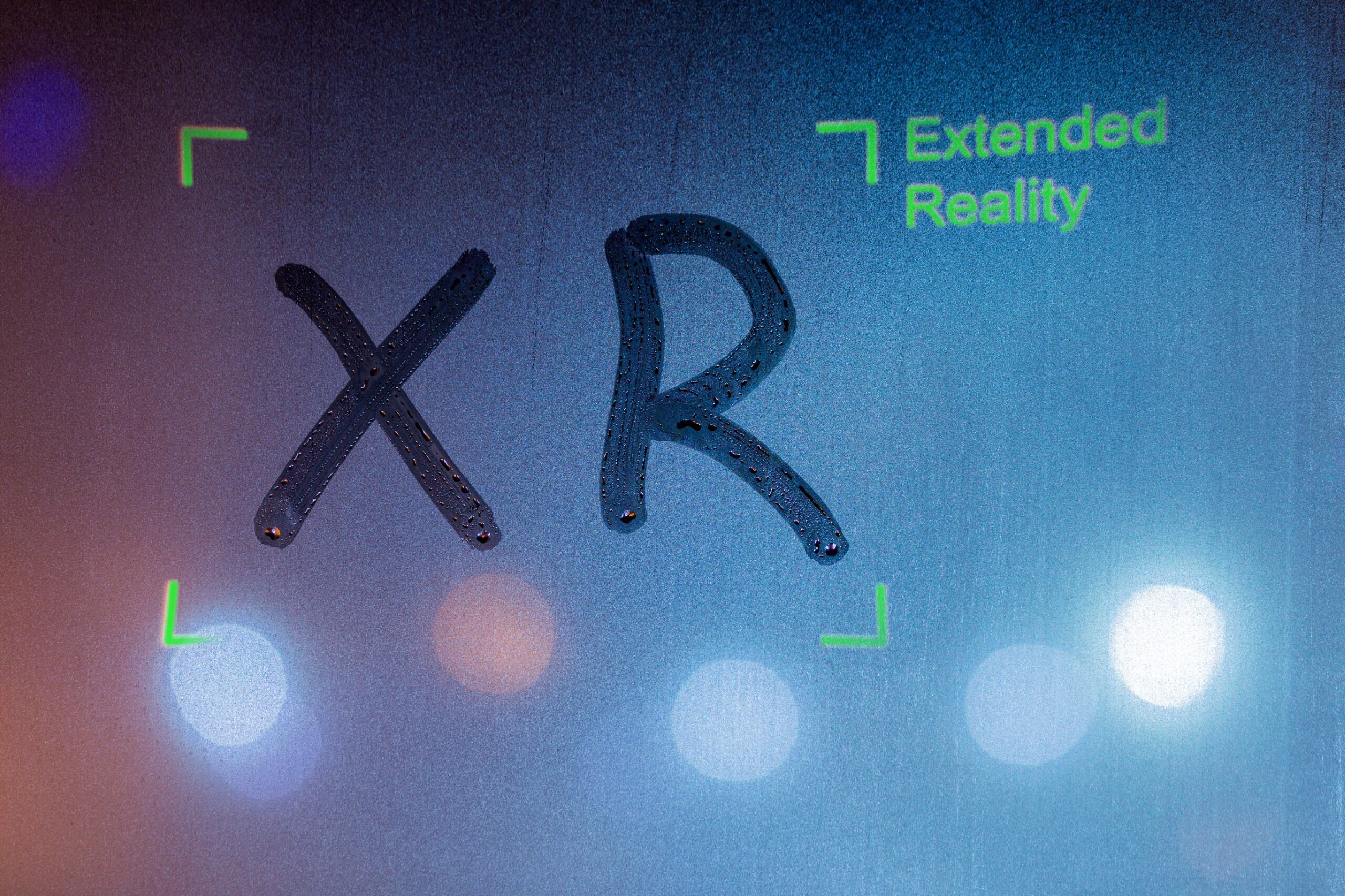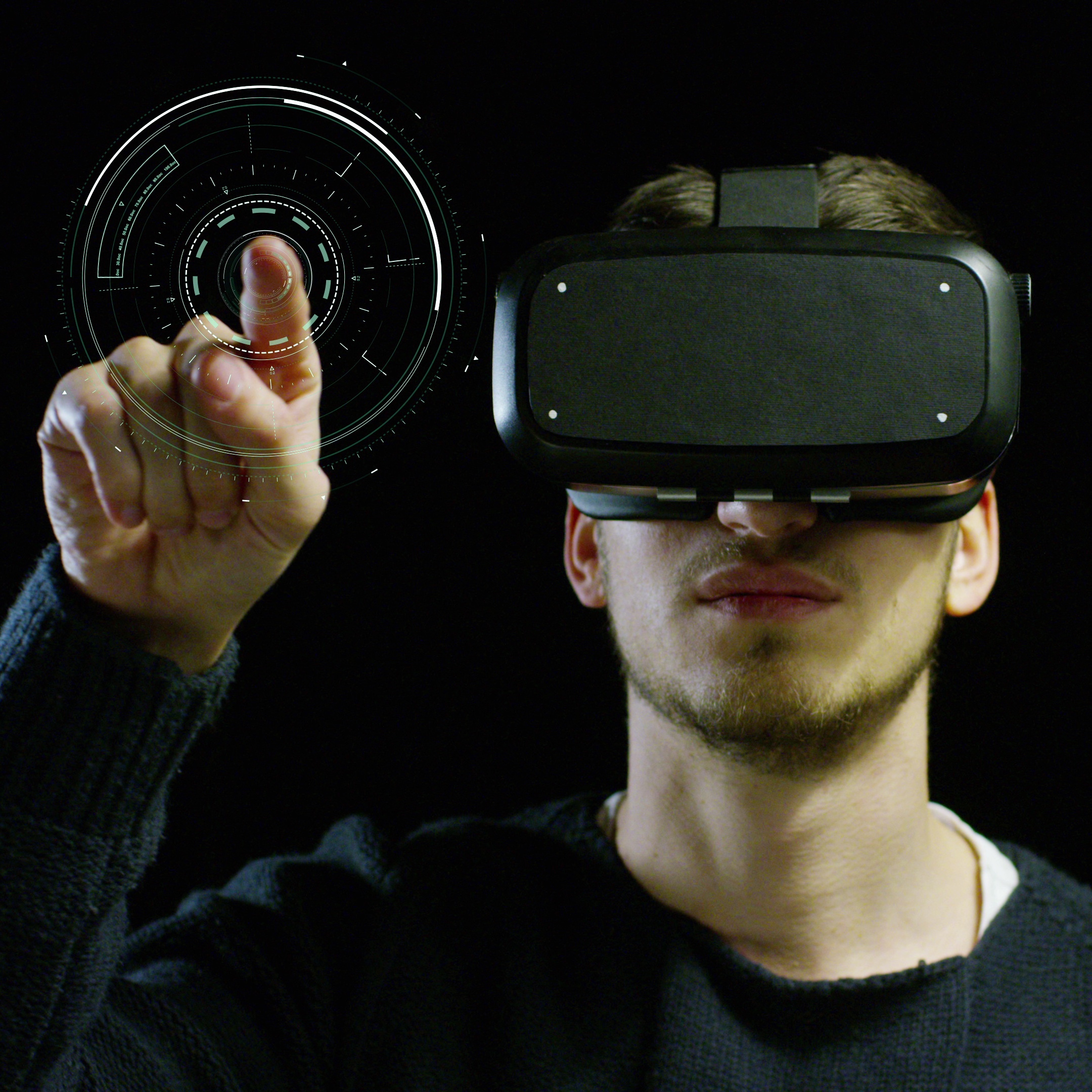How to use XR to supercharge brand storytelling and engage new-age customers
Computer scientists and psychologists have found that over the last two decades, the average human attention span has dropped from around 2½ minutes to around 45 seconds. Researchers seem to think this is because we’re constantly bombarded with information.
What this means for brand storytelling is that a customer might be paying attention to what you’re saying, but something else might come along and snatch that attention. This is especially true if “something else” is more interesting than your message. You know, a dog running a tractor, a cat playing the piano, people flinging cheese to appease raging toddlers, yet another outrageous celebrity plastic surgery before-after post—the internet is generally a circus.
This means that to hold people’s attention, your message and how you deliver it must be compelling enough to keep audiences’ attention while staying true to your brand and maintaining the seriousness of your value proposition. You’re looking to maintain a delicate balance between being engaging (or even entertaining, to some extent) and maintaining an air of professionalism, especially if you’re a B2B brand. B2C brands can get away with a degree of gimmickry that might not work in a B2B setting.
Immersive Reality (XR) can help B2B and B2C brands make brand storytelling more engaging while allowing them to maintain—even heighten—the integrity of their brand personalities. XR is the umbrella term for virtual reality (VR), augmented reality (AR), and mixed reality (a combination of the first two and everything else, including holographs and 3D projections). XR can help improve conversions and get more deals. For example, research has found that in retail, XR has the ability to increase sales conversions by over 50%, ramp up average order values by 30%, and axe return rates by 20%. This is also true in the B2B context. TCS, for example, uses an XR-enabled experience center as the last leg in its sales process. Read more about it here.
How XR is used in brand storytelling
Experience centers
An experience center allows your brand to take center stage. Brands typically showcase their history and legacy, brand values, operational excellence, awards, milestones, brand vision, and plans at this brand storytelling hotspot.
That said, your audience and goals also play a role in strategic planning for experience centers: Brand museums are the kind of experience centers that aim to appeal to customers and the general public. Meanwhile, experience centers for B2B and internal stakeholders are typically called executive briefing centers. Of course, what you aim to achieve through an experience center also contributes heavily to these choices.
For example, the TCS experience center we referenced in this blog gives visitors live information about security threats being monitored onsite. Moreover, the VR content visitors experience is determined by the nature of the deal in question. The Tata Steel Experience Center welcomes regulators and dignitaries alongside potential partners and clients and showcases its history, steel-making processes, and sustainability-oriented plans.
Remote demos
Technologies like virtual reality, augmented reality, holograms, and projection mapping can help product teams and marketers provide remote demonstrations of important solution attributes or operational efficiencies. For example, we discussed that Tata Steel depicts steel-making processes at its experience center. They achieve this immensely granular level of brand storytelling using projection mapping. A 3D scale model of the factory and overhead projectors combine to animate the scene as if the steel-making were happening before the onlooker’s eyes.
VR tours, essentially demos of real-world locations, are also becoming more commonplace, with attractions like The Louvre open for virtual visits.
Trade shows
Amidst countless stalls lined neck-to-neck, in approximately the exact dimensions, it’s a challenge to stand out at a trade show. You can opt for the largest stall category, but so can other exhibitors. Moreover, after the trade fair, those stalls become a fat stack of business cards sitting on a potential client’s desk.
So, how do you get noticed on the exhibition floor? And how can you ensure you are remembered? You take brand storytelling out of brochures and onto the exhibition floor.
With XR, you engage visitors with immersive first-person experiences of products that stay with them long after the trade show’s banners come down.
For example, at India Energy Week 2023, India’s Ministry for Oil & Gas made their stall engaging and memorable with several XR artefacts, including “portholes” that depicted the future. In this exhibit, visitors were invited to look into bioscopes for an immersive view of life in 2030.
Branding User-Generated Content (UGC)
Why not collaborate with your audience and the public to create branded content? With UGC, this sort of brand storytelling is easy with XR because you can make an AR filter allowing users to overlay your brand mascot, logo, or any other recognizable element onto their photos and videos.
Imagine Nike, for example, creating an AR filter with their “Just Do It” tagline for people to utilize when posting photos or videos of themselves enjoying adventure sports.
You elevate brand visibility, develop your online community, and create exciting content with your audience. This engages the creators themselves and their extended community. It also sets a long-lasting bond between the brand, the creator, and the creator’s community. The entertainment sector is incredibly ripe for this type of brand storytelling and engagement. A good example is Aladdin the Musical in London, putting AR filters to work for content. The filter on social media invited users to explore the “Cave of Wonders” and capture a selfie alongside the Genie. The participant with the most imaginative photo featuring the Genie was awarded a complimentary pair of tickets to the performance.
Maximize your investment with these five best practices
- Define your audience
We discussed how the distinct audience and goals of executive briefing centers versus brand museums impact the type of content showcased in these spaces, which might have a bearing on the type of immersive tech used and the overall look and feel of your experience center. This decision might impact the location—executive briefing centers make sense at your corporate headquarters. In contrast, brand museums make sense where the general public can access them or around a flagship property or a cluster of flagship retail/ flagship locations.
Defining your audience before conceptualization is critical whether you are designing an experience center, creating remote demos, or planning an event with XR tech as the centerpiece.
- Set goals and evaluate ROI
Dive into the types of goals one might have. Is there a message you want to send out through this brand storytelling exercise? Are you looking to crystallize positioning among your target audience, like Tata Steel and Mahindra? Or are you looking to drive convenience like MagicBricks?
It is also critical to measure ROI so that you can make course corrections, if necessary, in your next XR project.
- Conversion rate after XR brand exercises:
If your XR tech is part of your sales funnel, as in the case of TCS, it makes sense to measure the percentage of users who take a desired action, such as making a purchase, after engaging with your XR content. The same logic can be applied to the MagicBricks experience center. The consolidator could, for example, evaluate the percentage of experience center visitors booking a home through MagicBricks.
Of course, only some people’s XR utilization falls within sales. Using XR tech in brand storytelling may be a brand-building exercise for many brands. If you’re looking to track something less immediately tangible, like engagement or interest, some general markers of these can still be measured.
- Time devoted to the XR storytelling experience:
This metric indicates interest and engagement levels because the longer the user is engaged, the higher the likelihood of enjoying the experience. The more they enjoyed themselves, the higher the chances they associate positive sentiments with your brand.
- Frequency of interaction/ utilization of the XR experience:
If someone is using your AR filter frequently and posting tons of videos, the chances are that they have some level of affinity or interest in your product. Let’s go back to the London-based Alladin the Musical example from earlier. The organizers can guess with some degree of certainty that a user who has created five posts with the Genie is interested in the play.
- Expand impact with focused moves
Your experience center can be used for brand storytelling with XR tech and beyond. Leveraging digital engagement strategies enhances their impact, from capturing memorable moments to fostering ongoing connections with diverse audiences. Here are some top moves you can use:
- Capitalize on high-profile visitors: capture and share quality images of these visitors on social media.
- Collaborate with media and bloggers: arrange press events and provide immersive experiences for media so that you widen the reach of your XR experiences
- Establish a digital presence: Maintain active Instagram and YouTube channels for your brand to promote your XR experiences proactively
- Repurpose content: You could also convert physical experiences into engaging digital content. For example, you could create virtual tours that offer glimpses into immersive experiences through virtual platforms.
Read more about expanding the impact of XR experiences here.
- Upgrade tech at appropriate intervals
Apple launches a new phone every year. The same goes for major Android software updates (though security patch updates occur every few months). You probably had never heard the phrase generative AI back in 2019 and 2020, and now you find it cropping up all the time. Tech is advancing faster than ever, and while that’s exciting, it also means that what’s cutting-edge turns redundant much quicker.
As a result, it is advisable to revisit the concept and upgrade tech every five years and to make more minor tech upgrades regularly, particularly if something especially exciting or pertinent comes up in the interim. This keeps your brand storytelling and brand image contemporary and exciting. Remember: The XR tech for brand storytelling has to be a little ahead of the curve to be attention-catching and memorable; consequently, frequent upgrades will be required.
- Ensure ease of use or offer assistance
For your XR experience center to achieve its goals, it should be user-friendly. Of course, one way to navigate complex tech is to have facilitators onsite. These facilitators can also customize content to various visitor profiles and carry nuggets of information about user behavior back to you.
Most of the centers that we at magineu have designed for our clients typically embrace advanced or even complex tech with facilitators enabling visitors to enjoy the whole experience and enabling personalization of the XR journey.
For something like an AR filter or a remote VR tour, ease of use is critical – your audience won’t have facilitators available for assistance, and let’s face it: nobody will read a guide. Another crucial factor in such brand storytelling experiences is accessibility across multiple platforms. The idea is for your narrative to reach and connect with a broader range of visitors.
Why XR works
Enables focused interaction
By enabling users to engage directly with the narrative, brands cultivate a sense of agency, enhancing engagement and fostering a personal connection to the story. This hands-on involvement, coupled with the immersive nature of VR, keeps users focused and immersed, preventing distractions.
Creates emotional ties
XR-based brand storytelling can evoke profound feelings. By crafting experiences that transcend sight and sound, XR creates an emotional bond between the user and the narrative, elevating brand messaging into deeply personal encounters. Your brand story goes from mere marketing to an exciting adventure.
Deepens the narrative
With XR, you can replicate scenarios that are difficult to recreate in the real world. An excellent example of this would be workers receiving training on safety risks and emergency response in a VR environment. Imagine an aviation brand being able to train crew on mid-ocean evacuation SOPs within a safe VR environment.
Conclusion
Brands can elevate storytelling by using XR tech to foster interactivity, evoke emotional connections, and expand narratives beyond traditional confines–by getting customers to interact and feel brand experiences. By allowing customers to become part of the experience, brands can leave a lasting impression, driving brand recall, a thorough understanding of product value, and, ultimately, brand loyalty.
To embark on this transformative journey, work with proven experts like magineu to unlock the full potential of XR in your brand storytelling endeavors. Our team can help you define your needs, identify the best immersive exhibits to help you meet your goals, and provide 360-degree conceptualization, creation and maintenance for your XR experience center.



